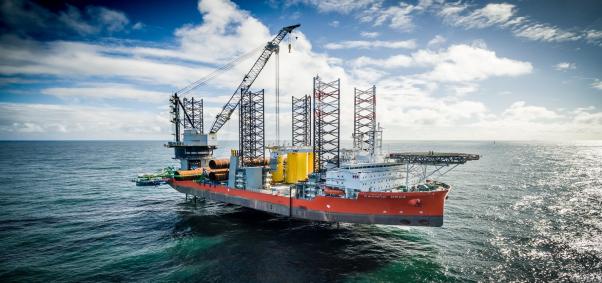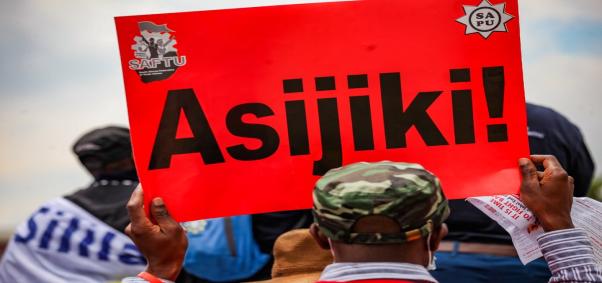
This article was published by USA Today on December 14, 2015.
Felipe Calderón is the former President of Mexico and co-chair of the Global Commission on the Economy and Climate.
This weekend in Paris, history was made. Over the past few years, momentum has been building around the world for a low-carbon economy. The climate agreement reached at the 2015 United Nations Paris climate summit Saturday has the potential to dramatically ramp up the speed and scale toward this low-carbon future.
The Paris Agreement gives businesses and investors the policy certainty they crave and provides a vital foundation for a healthier, stronger and more prosperous economy. It sends a definitive signal that the world is acting in a strong and coordinated manner to address climate change. It will help us unlock the multitrillion dollar opportunities that can come from low-carbon investment. Effectively, the agreement will enlarge the global markets for low-carbon goods and services and create real incentives for technological innovation. From now on, the smart money will no longer go into fossil fuels but into cleaner energy, smarter cities and more sustainable land use.
And as we move from policy to implementation, opportunities for economic growth will become even more evident: The global market for low-carbon goods is already worth an estimated $5.5 trillion and growing. In 2015 the world economy is expected to grow about 3%, and global emissions are expected to fall 0.6%.
One of the more significant developments in Paris was the launch of Mission Innovation by President Obama, French President Francois Hollande and an array of other global leaders. The 20 countries in the partnership, which represent 80% of global clean energy research and development, have committed to double their investment over the next five years. This initiative is being complemented by the Breakthrough Energy Coalition. A group of more than 20 private investors from 10 countries (including Bill Gates, Jeff Bezos, Jack Ma and Mukesh Ambani), the coalition will put billions of dollars on the table to help new, clean energy technologies come to market. Innovation has been and, with this support, will increasingly be a key driver of both growth and emissions reductions in the future.
In countries such as India and China, the implementation of the renewable energy targets they committed to as a part of the Paris Agreement will drastically shift global markets. India alone is aiming to install 320 gigawatts of solar and wind capacity by 2030. For comparison, the USA has only about 25 gigawatts of solar capacity and 66 gigawatts of wind capacity.
Developing countries have also shown important leadership in a number of areas and are already finding value in the low-carbon economy. Indian Prime Minister Narendra Modi spearheaded the launch of the International Solar Alliance, which aims to mobilize $1 trillion in investment and drive down the cost of solar power. China now has seven regional emissions trading schemes and is planning to implement a national emissions trading system starting in 2017; it has the potential to be larger in size than any we’ve seen before. And through the newly launchedAFR100 effort, African countries have committed nearly 123,000 square miles of land for restoration, an area almost equivalent in size to Norway.
While the agreement won’t stop climate change overnight, it is a historic step in solving the biggest problem of our time. More than 190 countries put forward climate commitments to reduce emissions, many of them unprecedented in ambition. Governments also agreed to a regular cycle to review and strengthen commitments, thereby establishing the mechanism we need to increase ambition over time.
What also makes these negotiations unique is how inclusive it has been with cities, businesses and civil society coming together, complementing the momentum of national actions and encouraging governments in Paris to go even further.
Worldwide, more than 430 cities have joined the Compact of Mayors, committing to tracking and reducing emissions under a common accountability framework;117 of those cities are in the USA, including New York, Los Angeles, Chicago, Houston and Washington, D.C.
Throughout the conference, business leaders called for strong action on climate with one voice. Many leading companies are already taking action. During the negotiations, it was announced that 114 companies with more than $932 billion in profits and 476 million tons of CO2 emissions have committed to set serious, ambitious emissions reduction targets aligned with climate science. These includeCoca-Cola, Dell, Sony and General Mills.
Now that the Paris Agreement has been forged, the real work will begin.
Governments must turn their national commitments into policy and then implement it. In so doing, they will find that this is not just about fulfilling the commitments they made in Paris, but that these actions are also in their economic self-interest.
The Global Commission on the Economy and Climate, of which I am the chair, has found that essentially all the emissions cuts we need to stop severe climate change can be met through actions that boost the economy. Countries, cities and businesses can achieve not just a better climate, but also better economic growth. We can do well by doing good.
A successful Paris Agreement behind us has set the stage to accelerate our journey for a low-carbon future. There’s no turning back. Besides, who would want to?






